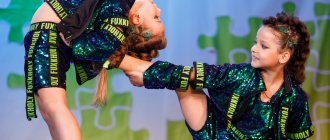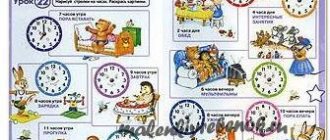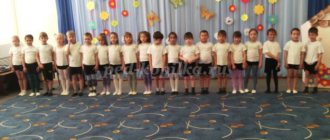Greetings to everyone who is interested in pedagogical issues! Your Sukhikh Tatyana continues to inform you about the intricacies of working in kindergarten and beyond. Today we will analyze the teacher’s self-analysis into its components: what it is and how to correctly compose this document.
It’s interesting that I already wrote about self-analysis by a psychologist, speech therapist, and some lessons in elementary school, but I forgot to talk about self-assessment of my own activities. Today I will correct this unfortunate omission on my part. I hope my fellow educators will respond and share their experience of how they write such documents.
I won’t say that there is now more writing in kindergarten than there was 10 years ago, but new requirements and new types of mandatory documentation have appeared. How many of you like to write reports, plans, etc.? I think not many. To make life easier for myself and my colleagues, I decided to tell you in detail what needs to be taken into account when compiling a self-analysis for a kindergarten teacher.
So, I’ll start with useful, in my opinion, teaching materials that are better to buy in printed form to always keep at hand at your workplace.
New exhibits for the teacher’s methodological treasure chest
The wonderful online store “UchMag” pleased me with an excellent offer: you can take part in the offline seminar “Map of the effectiveness of the professional activity of a teacher. Self-analysis” - for a symbolic price you will receive interesting information for use, and you will also be able to ask questions to professionals at any time and receive comprehensive answers.
You can put the “Teacher’s Portfolio” manual on your bookshelf - this is a collection of recommendations, documents, materials that should fill the folder of a teacher’s professional achievements, including advice on compiling a self-analysis according to the Federal State Educational Standard.
It will also be useful to you - there is an interpretation of all the key terms and concepts related to the activities of a teacher.
In addition, our activities require constant reporting, which requires the Journal of the preschool teacher.
If you have the opportunity to use a computer or tablet at work, I advise you to buy the program “Audit of personal qualities and professional competencies of preschool teachers. Diagnostic journal". This program will be useful not only for each individual kindergarten teacher, but also for the manager, who will be able to analyze the professionalism of the team as a whole and correct any shortcomings.
Self-analysis (annual report) of the early childhood group
Svetlana Pershan
Self-analysis (annual report) of the early childhood group
I. Early childhood group “Cheburashka”
.
The roster of the group is 15 people . The total number of sick days per child is 2.5. Over the course of the year, children developed according to their age , studied program material, and all children adapted well to kindergarten.
II. Working in kindergarten, we tried to create comfort in the group and transformed the developmental environment: We expanded the sports corner (added attributes to drawers for ease of use for children)
. With the help of our parents, we added material to the physical education corner (we purchased hoops and balls to ensure normal physical development, and also enriched the book corner. In the created play areas, we added material that stimulated cognitive abilities, and carefully thought out the placement of games, manuals, and toys in the playroom. We dressed dolls in primary colors.
III. Throughout the year, we cultivated basic skills of cultural behavior and were engaged in the education of cultural, hygienic and self-service . We taught children the rules of behavior: at the table - while eating, holding a spoon correctly, using a napkin, saying thanks after eating. In the washroom, using labeled supplies, children were taught how to properly wash their hands, dry themselves with their own towel, and use the potty. Not all children are able to hold a spoon correctly and eat carefully, but we are working on this and will gradually teach the children self-care .
IV. During the year, under the guidance of medical personnel, we carried out hardening procedures using natural factors: air, water, sun, taking into account the health of children: Daily morning exercises;
Invigorating gymnastics after sleep;
Regular ventilation of rooms, sleeping with open transoms in the summer;
Timely and proper organization of walks;
Physical education and walking on a ribbed board;
Conducting physical education sessions during classes;
Quartz group ;
Washing your face with cool water throughout the day:
Outdoor games and physical exercises in a group and on the street ;
Compliance with the regime in kindergarten and at home.
V. In physical education classes, children learned basic movements: walking with shifts of movement, balance exercises, running, crawling, climbing, rolling, throwing, throwing a ball, jumping. With the help of physical exercise, children have become faster, more resilient and more agile.
VII. Speech development. We developed children's ability to understand the speech of others, expand the child's orientation in the environment, cultivated attention and interest in natural phenomena and various objects, taught children to establish the simplest connections between objects and phenomena. When forming a vocabulary, we taught children, following verbal instructions, to find objects by color, size, distinguish their location, imitate the actions of people and the movements of animals. Taught children to understand the names of objects, phenomena, events, actions in the environment (in the garden, on the street)
. During training, the children mastered methods of action and those words, which we accompanied by showing objects (toys, actions, relationships. According to the diagnostic results: 2 children do not understand speech, because the children are still very small (one and a half years old, the rest of the children have development understanding of speech corresponds to the norm. Active speech is not developed in 6 children because the children speak indistinctly, that is, they eat up words. To solve these problems, games and exercises are conducted with these children to promote speech development. Parents were also given consultations.
VIII. Artistic and aesthetic development. During the year we taught children visual arts. They taught how to draw with pencils, crayons, felt-tip pens, and paints. Children learned to hold pencils and brushes correctly. They were taught to handle materials carefully. Children learned to draw different lines (paths, ribbons, streams, etc.)
simple compositions.
Children also learned to roll out plasticine in a circular motion with their palms (ball, apple, matryoshka, etc.),
flatten a lump between their palms, and make indentations in the middle
(mushroom, plate)
. They also got acquainted with appliqué; they really like gluing ready-made pieces. We tried to develop children's aesthetic perception of surrounding objects, taught them to distinguish the colors of pencils, felt-tip pens, and paints and to name them correctly. Children are always happy with their drawings, especially when they finger paint, and when their parents came to pick them up, they were immediately taken to the drawing stand and shown their works.
IX. In play activities, we taught children to play calmly and independently . A child’s play is largely imitative in nature, in the process of feeding, putting dolls to sleep, bathing, etc. - children repeat the actions of an adult who recently fed , bathed, and put him to bed. Thus, the baby reproduces, in conditional circumstances, a life episode, people’s relationships. Kids love to play with cars and dolls, and playing at the teaching table is of particular interest to them and creates a very joyful, cheerful mood; in the game, children learn colors, shapes and sizes. Over the course of the year, we used various folk tales in games, staged small productions, and the children went to theatrical performances by visiting artists. Children gradually became familiar with role-playing games. Through play children develop physically, mentally and emotionally, through play they create their real life experiences. Play for a child is a special type of activity, which is based on awareness of the world of human objects and relationships.
X. Labor education. In a small child, first of all, we cultivated positive relationships with adults - calm fulfillment of their demands, affection and love for parents and educators, the desire to provide help, affection, sympathy, etc. Throughout the year, we taught friendly relations between children, taught not take away toys, and ask for them, share toys. We also learned to distinguish between what is good and what is bad. In a corner of nature, the children watered plants, wiped dust from long leaves, in the fall they collected leaves on the plot, in winter they removed snow, thereby getting acquainted with the profession of “Janitor.”
. Throughout the year, we instilled in children respect for workers of any profession and emphasized the children’s desire to help adults.
XII. Throughout the year, we attended open classes, tried to carry out methodological consultations, and participated in methodological associations.
XV. When working with parents, one of the important tasks was the adaptation of children, and in order for the adaptation period to pass without unnecessary shocks, we gave advice to parents and supported them, tried to reassure them and explain that adaptation takes place in different ways, you just need to be patient and help the child enter into kindergarten life. Every day we told the parents about how their kids spent their time: how they ate, how they slept, what they played. Particularly restless mothers remained in the group with their child for several days at the beginning of the adaptation period. We involved them in joint games and conversations.
When communicating with parents, we always maintain a friendly relationship, even if we have to talk about things that are not very pleasant. We use many forms with parents. These are parent meetings, consultations, open days, individual work, joint leisure; through the parent's corner, where information about the topic and goals of classes, diet, and a selection of articles on topics of education and health development changes every day. The joint activities of children, parents and teachers help both us and parents find common methods and techniques for the upbringing and development of our children.
Why does a preschool teacher need self-analysis?
This document is like a teacher’s identity card. By self-analysis, you can evaluate the professionalism of the teacher, the ability to see, analyze your own pros and cons as a specialist, and also plan the further growth of your skills.

According to the new requirements, you must submit your portfolio for certification, which also includes a self-analysis of your teaching activities during the period between certifications. It is especially difficult to write this document for the first time, when certification for the first category is expected.
To make your task easier, try to simply answer a few important questions:
- Who is the community of children I work with? Here you can write about the number of students, their age, whether there are new children, what the general atmosphere is in the group, etc.
- What goals and objectives do I set for myself as a teacher, what do I plan to do in a year? General goals are listed: creating a favorable environment for the comprehensive development of each child, developing creative abilities. Also ensuring health, physical development, mental and emotional well-being.
- If you have a specific problem in the group, then you need to write about it. For example, the team did not accept the new child or the new child cannot adapt to the team. What did you plan to do about the problem?
- What conditions do you work under? It is necessary to characterize the material and technical base, teaching materials, teaching aids, etc. What materials have you personally developed and what have you purchased for the group?
- What topics have you studied in advanced training courses? Tell us where and what you learned.
- Tell us how you understand the essence of the educational process that you organize. Here you can start thinking about the meaning of your work in general and for specific tasks in particular.
- How do you control the results of your activities? Here describe diagnostics, testing, etc. You can provide a sample questionnaire or diagnostic if you developed it yourself.
- What activities have you held with students and their parents? What goals did you set and did you achieve the intended results? If you have a self-reflection on a specific lesson, you can use it as an insert.
- What problems did you face during the analyzed period? This could be a misunderstanding with parents, conflict situations between children, perhaps friction with colleagues or poor material and technical resources of the group.
- How did you solve the problems? Here you need to specifically describe ways to resolve conflicts and other problematic situations.
- What is the name of your self-education topic? What have you done to educate yourself over the past period?
Self-analysis of the teacher
MBOU PSOSH No.-1 Structural unit Pozhvinsky kindergarten Berezka
Introspection
pedagogical activities for the 2018-2019 academic year
Educator: Kochegina Alevtina Fedorovna
Pozhva village 2022
Self-analysis of the pedagogical activities of the preparatory group “Gnomes” for the 2018-2019 academic year.
During the 2018-2019 academic year, I built the entire educational process with children on the basis of an exemplary general educational program for preschool education “From birth to school”
edited by N. E. Veraksa, T. S. Komarova, M. A. Vasilyeva.”
All my teaching activities are carried out in accordance with the Federal State Educational Standard, which establishes a system of norms and requirements for the content of education and training, and children’s mastery of key components in a kindergarten setting.
Students' mastery of the educational program by region can be seen in the dynamics of growth in results. A comparative analysis of the level of development of children in the group can be tracked in monitoring, which is carried out with children 2 times a year in September and May.
This school year there are 22 children aged 5 to 7 years in the preparatory group. According to the results of the final monitoring, good results were achieved in children’s mastery of the program, in accordance with the Federal State Educational Standards targets.
During the monitoring of children, it was revealed that children are inquisitive, responsive, and have self-care skills. At the beginning of the school year, some children had a lack of skills and abilities in some educational areas (Sasha D., Timosha G. Sofia I.)
By the end of the school year, there is an increase in the level of knowledge in all educational areas.
Integration of educational areas is represented by “Cognitive Development”
,
“Social and communicative development”
,
“Speech development”
,
“Artistic and aesthetic development”
,
“Physical development”
.
The effectiveness of educational activities in educational areas of the program.
Educational field "Speech development"
| Beginning of the year | The end of the year | |
| High level of development | 0 % | 50% |
| Average level of development | 50% | 60% |
| Low level | 50% | 0% |
Educational field "Speech development"
implemented through the formation of a dictionary, teaching the sound culture of speech, worked on grammatical structure and the formation of coherent speech in children. At the same time, she took into account the peculiarities of the child’s vocabulary and ability to pronounce sounds in words. To develop speech, I used all routine moments and everyday situations.
By the end of the year, children's vocabulary increased significantly, and the use of words denoting an emotional state, ethical qualities, aesthetic characteristics, and various properties and qualities of objects became more active. Many children learned to isolate the first sound in words and use compound and complex sentences. The children showed good results in retelling the content of short works of art, telling a story based on a picture, and memorizing poems.
To implement all the tasks set for this section, I made and purchased games for the development of speech and familiarization with the environment, systematized card indexes, collections of illustrations, etc.
Educational field "Cognitive development"
| Beginning of the year | The end of the year | |
| High level of development | 0% | 64% |
| Average level of development | 59% | 36% |
| Low level | 1% | 0% |
Throughout the school year, I improved the children’s ability to perform actions with objects that differ in size, size, color, shape, distinguish and name the seasons by external signs, recognize and name the time of day, notice changes in the weather and differences in nature.
I paid much attention to the development of sensory motor skills of the hands, the development of fine muscles of the fingers, taught children perseverance, consistency in completing tasks, and understanding of the cause-and-effect relationship between objects. I taught children to support the child’s natural desire to explore objects, objects and phenomena of the immediate environment.
In direct educational activities, she taught children to look at a sample, identify parts in it, determine what parts it is made of, and developed the ability to navigate in space.
Children distinguish objects by shape and size; know what parts a group of objects is made of, name their characteristic features (color, shape, size)
. Many children can navigate the space around them.
As a result of daily observations in nature, children became acquainted with seasonal changes in nature, learned to distinguish and name the seasons. Through the use of games “When does this happen?”
,
“Describe, I can guess?”
,
“What first, what then?”
,
“Does this happen or not?”
,
“Seasons”
,
“Animals”
,
“Plants”
- consolidated the children’s acquired knowledge and ideas about the natural world.
She paid attention to expanding children’s understanding of the world around them: she taught them to distinguish and name types of transport, and introduced them to the rules of behavior in public places. For this purpose, I conducted conversations and organized viewing of story-based pictures, in which children not only became acquainted with the rules of behavior, but also learned to assess the situation. Through the use of the game "Professions"
continued to introduce children to the work of adults, the results of their work, and cultivated respect for the work of adults.
The data obtained as a result of the monitoring at the beginning and end of the school year indicate the effectiveness of the work carried out.
Educational field “Artistic and aesthetic development”
| Beginning of the year | The end of the year | |
| High level of development | 14% | 82% |
| Average level of development | 68% | 18% |
| Low level | 18% | 0% |
Over the course of the year, I developed a desire and interest in drawing in children, so all children are happy to engage in productive activities. I continued to teach children skills in using a variety of drawing media and methods (pencil, brush, gouache and crayons; stroke, line, vertical and horizontal straight and wavy lines). She introduced children to unconventional drawing techniques: cotton swabs, fingers.
During modeling classes, children created images of various objects and toys, combined them into a collective composition, and were able to use a variety of learned techniques.
In the appliqué, she continued to teach children the rules of using scissors, cutting out objects in straight and round shapes, carefully sticking images of objects, making patterns and compositions.
Educational field “Social and communicative development”
| Beginning of the year | The end of the year | |
| High level of development | 0% | 41% |
| Average level of development | 32% | 55% |
| Low level | 68% | 5% |
I realized the social and communicative development of children through thematic conversations, game situations, playing sketches, imitating movements. Children developed goodwill, responsiveness, the ability to respond to another person’s greeting, politely express their request, thank them, and encouraged children to interact with each other and with unfamiliar adults. Developed in children the ability to see different emotional states of close adults and children (joy, sadness, anger)
. She paid attention to the safety of children’s life activities during the day indoors and on walks, while listening to fairy tales, looking at pictures and subject cards, and introduced children to the basics of safe behavior in everyday life, in society, and in nature. Throughout the year, she taught me to follow the rules of behavior when playing with sand, water, and small objects.
Children received elementary ideas about a person: about themselves, about boys and girls, close relatives, and became acquainted with parts of the human body: head, torso, arms, legs. She instilled in them a sense of satisfaction from cleanliness and order, and taught them to be attentive to the instructions of adults.
She paid a large role to the development of moral qualities of the individual and the patriotic education of each child.
Educational field "Physical development"
| Beginning of the year | The end of the year | |
| High level of development | 0% | 41% |
| Average level of development | 32% | 55% |
| Low level | 5% | 68% |
To ensure the conditions for the physical development of children of the sixth year of life, I carried out an individual approach to each child. Throughout the year, children were provided with full hygienic care, strict adherence to the regime, protection of life and the nervous system, prevention of fatigue and injury, and development of motor skills.
I organized physical exercises in a playful way. She taught children to play collective outdoor games. Throughout the year, I continued to teach and reinforce children’s basic personal hygiene skills, develop self-care skills, and mutual assistance.
In my work I use various forms of training: traditional, integrated, complex, combined classes. As well as various techniques: the use of clarity, playful, surprise moments, the method of problem situations, search activities, etc.
In the group, I organized the subject-spatial environment. It is developmental in nature.
Play areas are organized in accordance with the age of children and their individual needs. There is educational and developmental material: didactic games, models, puppet theaters, costumes, masks; Thematic toys are presented: dolls, cars, etc. There are corners with large furniture for role-playing games.
Every day I try to maintain a friendly psychological atmosphere in the group, creating favorable conditions for the physical and psycho-emotional comfort of children. I try to establish contact with each child, win him over, arouse and maintain interest in children visiting kindergarten.
Working with family
I try by all available means to achieve interaction and agreement with parents in nurturing a common culture for children and in creating an emotionally favorable climate.
During the school year, goals and objectives were set: to unite the efforts of the family and kindergarten for the education and development of a preschooler.
Disseminate pedagogical knowledge among parents;
Provide practical assistance in raising children;
Contribute to the establishment of a trusting relationship between parents and group educators: respond adequately to the recommendations of group educators, make efforts to establish partnerships with educators to solve the problems of raising a child.
In the reception group there is a parent corner and stands “For you parents”
,
“Health Corner”
,
“Psychologist’s Recommendations”
, mobile folders containing information for parents and recommendations, as well as exhibitions of children’s works on artistic creativity.
Throughout the year, parents were consulted on their children’s progress and other pressing issues, parent meetings were held, the material in the parents’ corner was constantly updated in accordance with the season, and the topics of safety, health, and hardening of children were addressed. The survey method was used to identify problems and pressing issues. Families made many crafts for exhibitions, held events, leisure activities, holidays, and entertainment together.
The children of our group, together with their parents, actively took part in competitions:
- Symbol of the year;
- Municipal competition “Pozhvinsky stars” 2018-2019.
- "Gifts of Autumn";
- Municipal competition “Burning Bush” (3rd place, 5th class);
- Regional competition “Bonfire of Memory” (4 lessons);
- Participation in the festival of children's creativity in the categories: “Choreography” and “Fine Arts” (14 participants);
- Arts and crafts “Easter joy”;
She took part in competitions, craft exhibitions, and events held within the preschool educational institution:
- International competition “Me and Flowers”
- All-Russian competition "Symbol of the Year"
- Regional traffic rules competition (3rd place).
In the future, I plan to continue working on professional self-development and self-improvement, as well as creating a favorable psychological microclimate in the group and in working with the families of students, studying new technologies and methods in raising and teaching children. Improving your teaching competence.
How to end self-analysis?
At the end of the self-analysis, it is appropriate to talk about your awards - certificates, diplomas, gratitude and smoothly move on to summarizing the above. If you are applying for the highest category, it would be good to present a plan to improve your own professionalism for the future certification period.
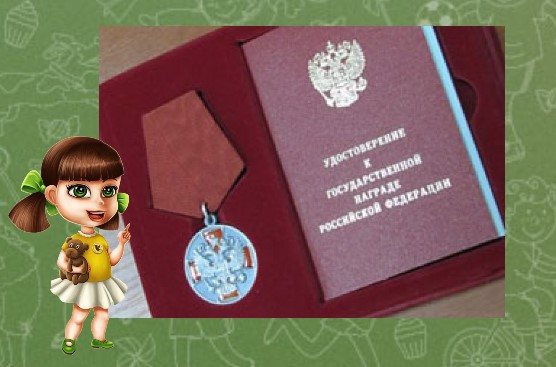
Also list your strengths and weaknesses as a specialist and as an individual and tell us how you are working on yourself. Perhaps there are specific obstacles to your professional growth, you can indicate them.
If we say in one sentence about the essence of self-analysis, then we can do this: you must describe your purposeful work with children, parents, interaction with colleagues and your role in the microsociety (kindergarten).
In general, self-analysis is written in free form, there are no strict canons. But the key points listed above must be present so that you can count on a positive assessment of your activities by the commission.
If you have questions, do not hesitate to ask, I will definitely answer in detail!
Show my article to your friends, if there are educators among them, just click on the social network icons. Also subscribe to new materials, I will try to make my blog interesting for everyone!
Sincerely, Tatyana Sukhikh! Till tomorrow!
By the way, I recommend reading:

Self-analysis of the professional activities of a senior group teacher for the 2022 academic year
Self-analysis of the professional activity of a teacher of the senior group No. 6 for the 2022 – 2022 academic year
Education: Higher. She underwent professional retraining at the Faculty of Advanced Training and Professional Retraining of Education Workers of the Federal State Budgetary Educational Institution of Higher Education "Omsk State Pedagogical University" under the program "Pedagogy and Methods of Preschool Education." Teaching experience – 4 years. Information on advanced training: BOU DPO "IROOO" under the program "IROOO for beginners: Content of educational areas in accordance with the Federal State Educational Standard for Education" / 2022. In the 2020-2021 academic year, I worked as a teacher in senior group No. 6. There are only 32 people in the group, of which 21 are boys and 11 are girls. The age of children is from 5 to 6 years. The atmosphere in the children's team is friendly and supportive. Partnership relationships and joint activities of children prevail. Disagreements between children, if they arise, are promptly resolved. Work with children. All children are diversified, many of them are additionally involved in various sections and clubs (dance, developmental, sports). It was very interesting to work with all the children throughout the year. Over the course of the year, children developed according to their age and showed positive dynamics in all areas of development. This school year a “new” girl came who easily adapted to our group. Throughout the school year, educational activities were aimed at ensuring the continuous, comprehensive development of children. The organization of the educational process was built on the basis of the exemplary program “Childhood” (authors T.I. Babaeva, A.G. Gogoberidze, O.V. Solntseva). It reflects the main content of preschool education, which implies the comprehensive formation of the child’s personality, taking into account his physical and psychological development, individual capabilities, interests and abilities. The goal of the program is to create for each child in kindergarten the opportunity to develop abilities, broad interaction with the world, active practice in various types of activities, and creative self-realization. The program is aimed at developing independence, cognitive and communicative activity, social confidence and value orientations that determine the child’s behavior, activities and attitude to the world. To achieve the goal, it is necessary to solve problems that will ensure: • strengthening the physical and mental health of the child • enriched development of the child, ensuring a unified process of socialization-individualization, taking into account children's needs, capabilities and abilities; cognitive, creative activity and imagination • organic entry of the child into the modern world • introducing the child to the beauty, goodness, culture of his country and instilling respect for other peoples and cultures. In accordance with the basic general education program and the approved schedule of direct educational activities, educational activities were systematically carried out with children. The set goals were achieved in the process of implementing various types of activities: gaming, communicative, labor, cognitive-research, productive, musical and artistic. Also during the school year, a group was held on non-traditional drawing techniques. The group's work program was developed. Throughout the year, a daily routine was strictly observed, which corresponds to the age characteristics of children in the older group and contributes to their harmonious development. According to the plan, medical and pedagogical examinations of the pupils were carried out, which confirmed the positive dynamics of the development of each child and the group in general. During the year, the group held the following events with children : the group’s pupils took an active part in the all-Russian competitions “Christmas Tale” and “Sunny Circle”. There are diplomas for winners and participants. Preschoolers, together with their parents, participated in drawing competitions and exhibitions of preschool crafts: “Autumn Fantasy”, “Father Frost’s Workshop”, “Creative workshop for making folk toys”, “Space Space”, “I am a young citizen of Russia!”, “Road ABC” ", "Young Artists"; Preparing a photo album “Professions of my parents” (with children’s stories); photo vernissage “How we spent the winter holidays!”; kaleidoscope of good deeds “Our smaller friends”. The fairy tale “Cat’s House” was also staged with the children. Thematic weeks were held: “Preschoolers today, schoolchildren tomorrow”, “Autumn time, the charm of the eyes”, “People’s work in autumn”, “Earth is our common home!”, “I will grow up healthy!”, “My city”, etc. .d. Thematic holidays were also successfully held “Baba Yaga’s Cafe” (autumn holiday), “Auntie Kholodryga and Icicle Zavidulka” (New Year’s party), “The Wizard is a Dropout” (a holiday dedicated to March 8). Throughout the school year, systematic work was carried out with parents. Systematically throughout the year, information is updated in the parent corner, various consultations are placed, folders are moved (by topic), reminders and recommendations for parents: “All about baby nutrition”, “All about the development of children’s speech”, “Help children remember fire safety rules” "," Let's teach children how to care for their oral cavity," etc. The group has a subject-developing environment. It is diverse and developmental in nature. The entire group space is divided into zones in accordance with the age and individual needs of the children, and play areas are organized. There are educational and developmental games; books recommended for reading to children of this age; books loved by children in this group; seasonal literature; story toys: cars, dolls, etc. Corners with large furniture for role-playing games have been created. The group has a selection of blocks, construction sets, and small toys. Work is also constantly underway to equip the subject-development environment. To replenish it during the year, didactic and educational games were purchased: - “Loto”, we develop logic. — Educational game “Checkers”. — Educational game “Dominoes”. — Board game Jenga. — Puzzle “Fold the square” level 1 and 2 — Mosaic. — Mathematical construction game “Columbus Egg” — Exercises for speech development “Find a house” — Puzzles “Forest animals,” “Sea World,” “Dinosaurs,” “On the Lake,” “Fairy Tale.” — Developmental posters on healthy lifestyle.” In my teaching activities, I am guided by the rules of continuous development and improvement of professional skills. This school year, I showed one open event at the preschool level: on environmental education for children of senior preschool age, “Meeting of the “Nature Defenders” Club” (October, 2022). Prepared the winners of the All-Russian competitions “Christmas Tale” and “Sunny Circle” (letters of gratitude were issued). Listened to the webinar “Using Lepbook technology in working with preschool children” (a certificate of participation was issued). She created her own personal page on the educational portal “Educational and Methodological Office” (ped-kopilka.ru). In my professional activities, I try to actively use modern information and computer technologies, which have a positive effect in explaining new material or consolidating what has been learned. They bring a visual effect to direct educational activities, facilitate the process of assimilation, and broaden one’s horizons. In my work I use health-saving technologies: outdoor games, sports events, valeology classes, hardening procedures, organization of walks, etc. The past academic year was very eventful, rich in events and activities. A lot of work was done with the students and their parents, which left positive impressions. In conclusion, I want to say that I plan to continue working on professional development and improvement of my own activities, as well as creating a favorable moral climate in the group and in working with the families of students, studying the latest methodological literature in the upbringing and teaching of children, and improving my pedagogical literacy.
We recommend watching:
Self-analysis of the pedagogical activity of the teacher for the 201.. - 201.. academic year Self-analysis of the professional activity of the teacher for certification according to the Federal State Educational Standard
Similar articles:
Self-analysis of the pedagogical activity of the teacher
Self-analysis of the job functions of a preschool teacher
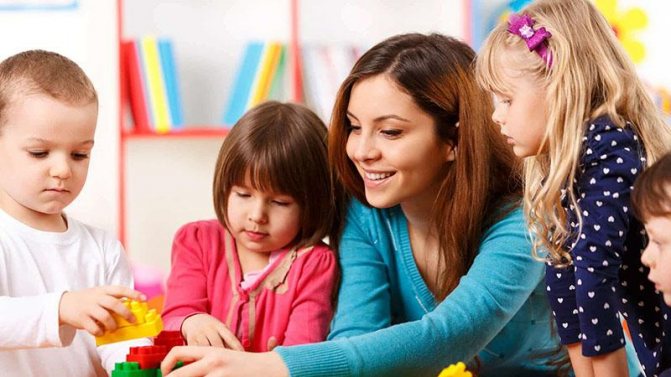
It is important for a teacher working with preschoolers to understand the criteria by which he should evaluate and analyze his work activity. At the same time, take into account the number of students in the group. The educator must solve his problems with the help of the institution’s special educational program. It was developed on the basis of the “Childhood”, “Development” or other programs proposed by the Ministry of Education of the Russian Federation.
Articles on the topic
- What is professional stress, its main signs and types 08/29/2021
- What is the role of self-esteem in choosing a profession 08/13/2021
- What does success in business depend on and how not to lose it 07/12/2021
- Tasks of modern psychology in the field of development and formation of human personality 02.28.2021
He can choose several areas of activity:
- working with different age groups;
- classes with talented children and features of their upbringing;
- teaching children Russian if it is a second language for them;
- use of inclusive education programs;
- work in groups with different periods of stay for children;
- work in a group preparing students for school;
- interaction with socially neglected children or those in difficult life situations.
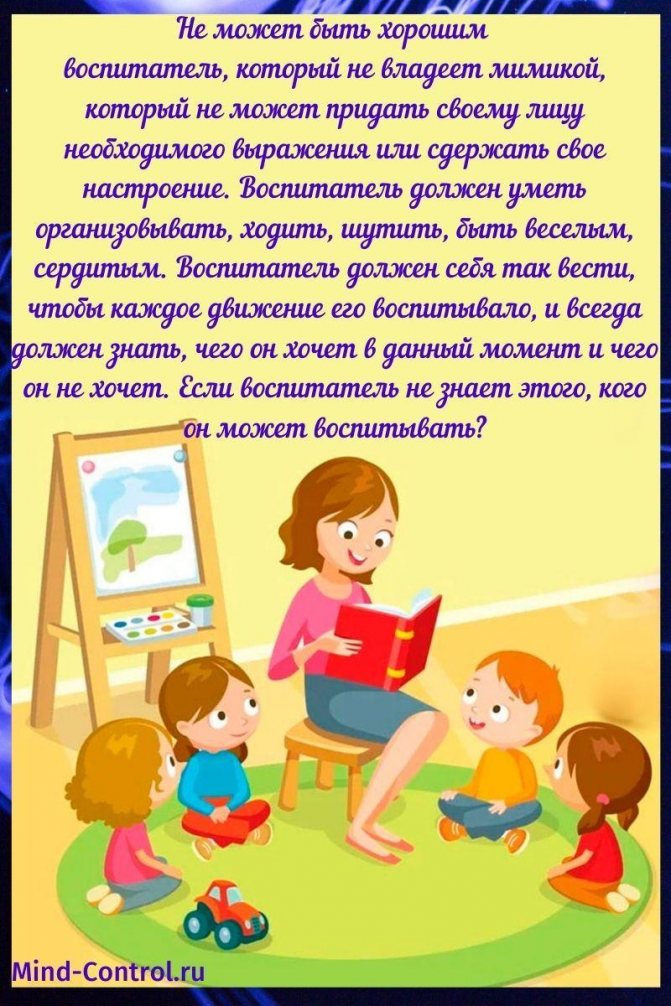
It is also possible for the teacher to choose other directions. Which allow children to fully realize their capabilities and develop interests. By carrying out self-analysis and self-assessment of the teacher’s professional activity, it is possible to systematize the work he has done and note achievements and shortcomings.
The tasks of the teacher in the group include reaching out to each child and including him in active activities. Development of initiative in children, assistance in finding the right solutions and ways out of various life situations.
One of the important indicators of a teacher’s performance is the health of preschool children. This task is carried out jointly with the medical worker and those responsible for the physical education of children.


